Handwriting
At the Pegasus Academy Trust we teach children the skills to form letters correctly and join clearly and fluently. This supports all children in achieving the expected end of Key Stage 2 standard “Write neatly and maintain legibility in joined writing when writing at speed.”
Handwriting is an essential skill that supports the transcription and spelling element of the National Curriculum for English. When teaching handwriting, it is important that good posture and an appropriate pencil grip are encouraged. Seating for left-handed pupils also needs to be considered to allow them to write without banging into the elbows of other children.
In the Early Years Foundation Stage, letter formation is taught starting with print. Cursive script is introduced for some children later in the reception year when they are showing the required level of fine motor skills.
In Year 1, children are introduced to cursive letter formation and are expected to form capital letters and digits that are the right size and orientated correctly. Letters should also be the correct size in relationship to one another.
In Year 2, children begin to join and are introduced to diagonal and horizontal strokes to help them join some letters. Their writing should also use spaces between the words that reflect the size of their letters. In order to meet the expected standard for the end of Key Stage 1, children must meet these expectations.
In Years 3 and 4, children work on developing a fluent, joined and legible style of writing that enables them to write neatly at speed. In Year 3, there may be some inconsistencies in letter formation and size but this should be consistent by the end of Year 4. Neat handwriting is also an essential element of editing and improving work so that changes can clearly and easily be read.
In Years 5 and 6, children will begin to develop a personal style to their handwriting. In order to meet the expected standard for Key Stage 2, children must write neatly and maintain legibility when writing at speed.
In order to become an ‘Expert’ in the handwriting scheme and be awarded a pen licence in Key Stage 2, children must produce handwriting that is consistently neat, joined and fluent and is line with the Pegasus scheme.

Handwriting in the Early Years and Foundation Stage (EYFS)
The end of year expectation for reception children is that they can hold a pencil effectively using a pincer grip to form recognisable letters, most of which are correctly formed. This is a strong example of this as it is legible and demonstrates good pencil and letter size control. Most letters are formed correctly but there are inconsistencies with the descender letters that should sit on the line with the tail below the line. Most children will be printing their letters in the EYFS.
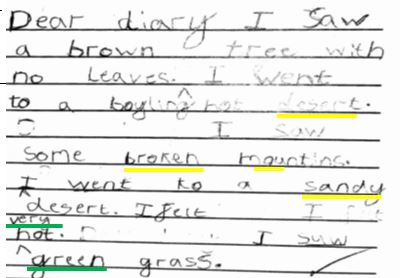
End of Year 1 expectations
This is a good example of Year 1 handwriting as all the letters are formed using the correct orientation. Capital letters are formed correctly and there are clear finger spaces between the words.
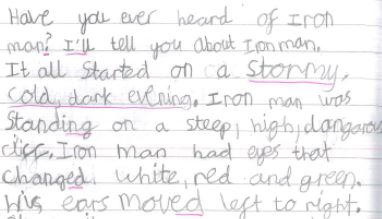
End of Year 2 expectations
In this example, we can see how the child has developed from Year 1. They are beginning to join some letters to help their writing flow. At this stage, letter sizing may be inconsistent as the child begins to learn to join. Children in Year 2 need to produce handwriting of this standard in order to meet the Key Stage One expected standard in writing. Pegasus elements like loops on the letters ‘f’ and ‘g’ are clearly discernible.
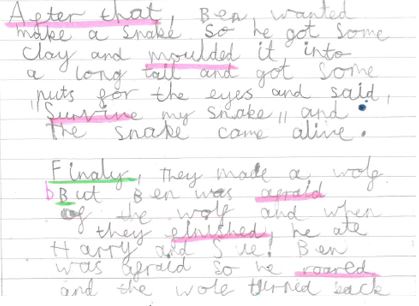
End of Year 3 expectations
In Year 3, the child has progressed to joining all letters as a matter of course. Capital letters are used correctly and not joined. There are still some inconsistencies in letter sizing as the child becomes familiar with joining multiple letters. Handwriting is legible and flows well across the page and children at this stage are generally fitting more words per line.
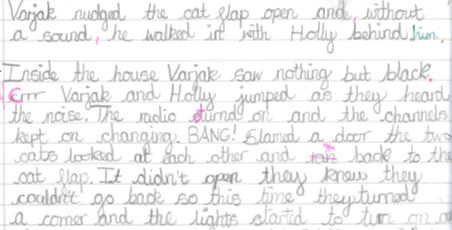
End of Year 4 expectations
In Year 4, the child has progressed to ensuring writing is neat, fluent and joined. Letter sizes are consistent and work is neat and clear. Neat, clear handwriting is also used when the child has ‘pink pen edited’ their work to make improvements.
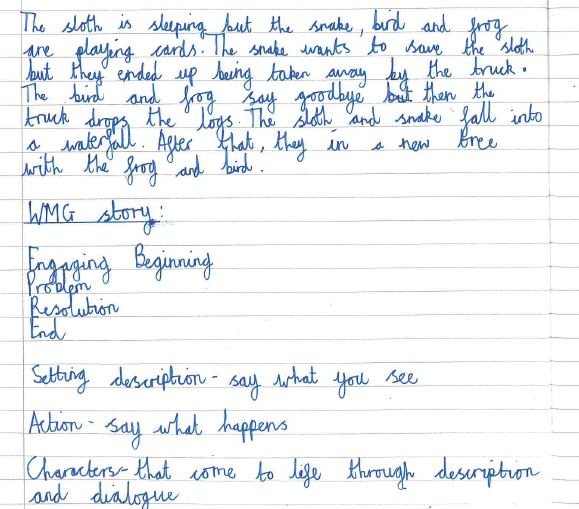
End of Year 5 expectations
In Year 5, the child has progressed to using a more personal style. Handwriting is still neat, joined and fluent but the child is making personal adaptations to their writing that allow them to write at speed.
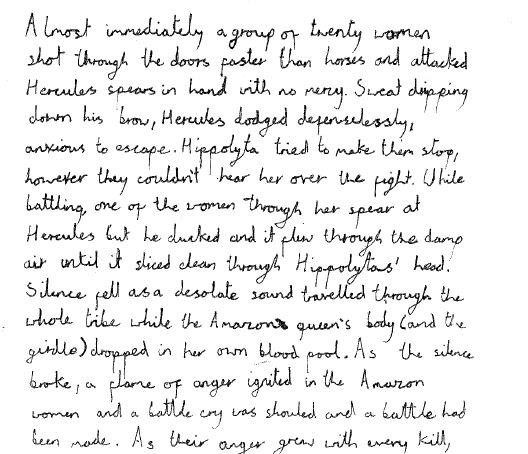
End of Year 6 expectations
In Year 6, writing is joined, neat and legible and children use a personal style that means they can write at speed. The child will consider when it is best to join a letter and when it is quicker not to. Children in Year 6 must produce neat, joined and fluent writing in order to meet the expected standard in writing for the end of Key Stage 2.












